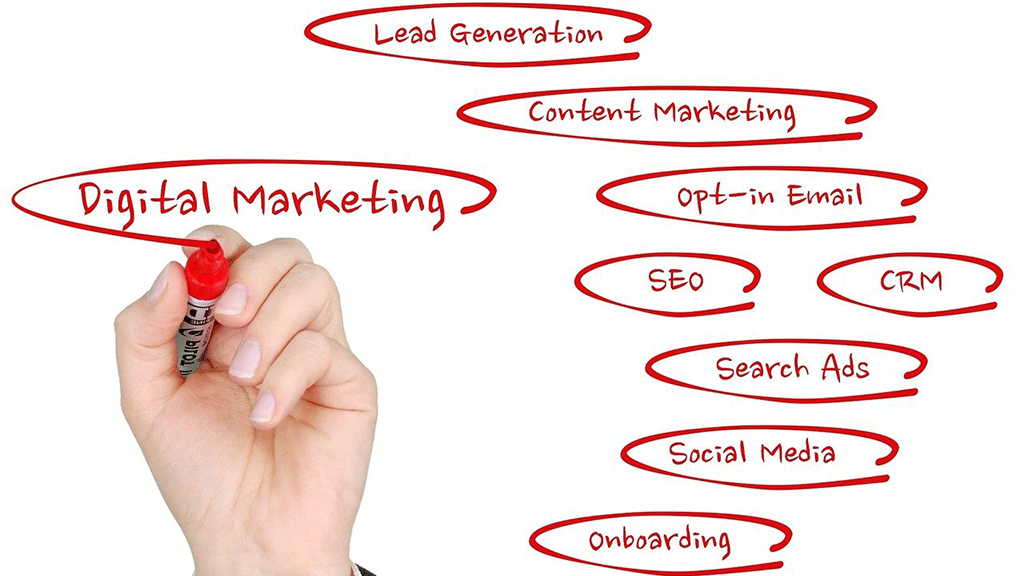“What do you need to start a business? Three simple things: know your product better than anyone. Know your customer and have a burning desire to succeed.“
~ Dave Thomas
Key Takeaways
- Strategic Budget Management: Emphasizes the importance of a strategic approach to marketing budget allocation, aligning spending with business goals and measuring success.
- Cost-Effective Strategies: Highlights leveraging social media and email marketing as cost-effective strategies for reaching a wide audience without a significant financial investment.
- Budget Allocation: Advises on diversifying investments across various marketing channels to maximize ROI and mitigate risks associated with channel underperformance.
- ROI Measurement: Stresses the importance of calculating the return on investment (ROI) for different marketing activities to ensure efficient use of the marketing budget.
- Adapting Strategies: Encourages regular review and adjustment of marketing strategies and budgets based on performance data and changing market trends.
- Long-Term Growth Planning: Focuses on investing in customer relationships and content marketing for sustainable long-term engagement and brand building.
Navigating the Marketing Budget Maze
Starting a small business is an exciting journey filled with ideas, dreams, and possibilities. But to navigate this trail successfully, it's important to understand one key aspect –managing your marketing budget. In this article, we're going to guide you through the most common intricacies of creating and maintaining a marketing budget that will align with your business goals.
In this guide, we'll discuss what a marketing budget is and why it's a critical tool for your business's growth. From understanding the basics and setting realistic marketing goals to conquering the art of budget allocation and identifying cost-effective strategies.
Additionally, we'll explore how to estimate marketing costs and calculate the return on investment (ROI) for various marketing channels.
Whether you're just starting out or looking for a bit more info on a marketing budget for small business, we'll get you headed in the right direction with some essential knowledge and practical tips to help you harness the power of strategic marketing to help ignite your small business toward sustained growth and success.
Understanding Marketing Budgets for Small Business Owners
As a small business owner, you're not just the leader of the expedition; you're also the chief navigator, especially when it comes to your marketing budget. Understanding and managing this budget is like charting a course through a dense trail of varying topographies of business opportunities. It's one of the foundational steps that can fuel your business toward growth and success.
As always, since I don't know where your head is at, let's start with some quick basics:
What is a Marketing Budget? At its core, a marketing budget is a detailed roadmap of your planned marketing investments. It's a financial plan that outlines your marketing strategies, campaigns, and activities, along with the costs associated with them. Think of it as a financial compass that guides your marketing decisions, ensuring you invest your resources wisely to achieve the best possible outcomes.
For small businesses, a marketing budget isnt just about allocating funds; it's about strategic planning and prioritization. It helps you to:
- Focus Your Efforts: By clearly defining where and how to spend your marketing dollars, you avoid wasteful spending and concentrate on what works best for your business.
- Measure Success: It provides a framework to measure the effectiveness of your marketing strategies, helping you understand what delivers the best return on investment (ROI).
- Adapt and Grow: As your business evolves, so should your marketing budget. It's a dynamic tool that should be reviewed and adjusted regularly to align with your changing business needs.
At its core, your marketing budget for your small business plays a role in the overall effectiveness of your marketing strategies. Balancing them in a way that aligns with your business goals and budget constraints is key. Your marketing budget should account for a variety of components, which may include:
- Advertising Costs: This can range from online ads to traditional media such as print and radio.
- Marketing Tools and Software: Investments in technology that aid in marketing efforts, such as automation tools or customer relationship management (CRM) systems.
- Staffing and Outsourcing: The cost of hiring marketing professionals or outsourcing to agencies.
- Promotional Materials: Expenses for creating and distributing promotional items like brochures, flyers, or product samples.
- Market Research: Funds allocated for understanding your market, competition, and customer preferences.
Setting Marketing Goals for Small Business Owners
Setting goals for your marketing spend is vital. Without clear marketing goals, your budget and efforts might not lead you where you want to go. You need to set aside time to do this because it:
- Provides Direction: Just like a trail map gives clear direction on a hike, clear goals guide your marketing efforts. For example, if your goal is to increase online sales, you'll focus more on e-commerce strategies and digital advertising.
- Enhances Focus: It helps you channel your budget into areas with the most impact. Say your target is to improve brand awareness; you'll prioritize activities like social media campaigns or local community events.
- Facilitates Measurement: You can only measure success if you know what you're aiming for. If your objective is to grow your email list, you'll track metrics like subscription rates and campaign conversions.
Identifying Your Marketing Objectives
To set your marketing goals, start by understanding your business needs and aspirations.
- Understand Your Business Needs: For instance, if you're launching a new product, your goal might be to create buzz and educate potential customers.
- Be Specific: Instead of a vague goal like ‘increase traffic,' aim for ‘increase website traffic by 30% in six months'.
- Make Them Measurable: Attach numbers and timelines to your goals. For example, ‘gain 500 new Instagram followers in three months'.
- Set Realistic Timelines: Assign achievable time frames. If you're a new brand, expecting to triple your sales in a month might be unrealistic.
Examples of Marketing Goals
- Increase Website Traffic: Enhance your online presence through SEO and content marketing. For example, start a blog related to your business and optimize your posts for search engines to attract more visitors.
- Boost Social Media Engagement: Focus on creating interactive and shareable content. For instance, run a photo contest on Instagram where participants tag your business.
- Grow Email Subscriber List: Use strategies like offering exclusive content or discounts to new subscribers. You could add a sign-up incentive on your website's landing page.
Role of SMART Goals
Remember, effective goals are SMART: Specific, Measurable, Achievable, Relevant, and Time-bound. This framework turns vague aspirations into actionable paths. For example, a SMART goal could be, “Increase the number of leads from our website by 15% in the next quarter by optimizing landing pages and running targeted Google Ads campaigns.”
Budget Allocation and Management for Small Business Owners
Allocating your marketing budget is akin to distributing seeds in a garden; you want to plant them where they have the best chance to grow and flourish. It's about striking the right balance between various marketing channels and strategies to maximize the return on your investment. To this point, budget allocation is not a one-size-fits-all process. It should be tailored to your specific business goals and market scenario.
- Diversify Your Investments: Don't put all your eggs in one basket. For example, if you're running an online store, allocate funds for social media advertising, email marketing, and SEO. This way, if one channel underperforms, the others can compensate.
- Prioritize High-ROI Activities: Identify which marketing activities give you the most bang for your buck. If Google Ads has historically driven sales, allocate a higher percentage of your budget there.
- Keep an Eye on the Market Trends: Marketing trends can shift rapidly. For instance, if video content is becoming more popular in your industry, consider reallocating some budget to create video ads or tutorials.
Efficient Use of Marketing Budget Templates
A marketing budget template can be your best friend in managing your finances. It helps you visualize where your money is going and make adjustments as needed. For instance, a simple spreadsheet could track your monthly spending across different channels and compare it with the results they're generating.
Cost-Effective Marketing Strategies for Small Businesses
As a small business, your marketing budget is likely limited, so it's crucial to focus on cost-effective strategies.
- Leverage Social Media: Platforms like Instagram and Facebook offer a cost-effective way to reach a large audience. For example, regularly posting engaging content and interacting with your followers can boost your brand's presence without heavy investment.
- Utilize Email Marketing: It's one of the most cost-effective tools. Services like Mailchimp or Brevo offer affordable plans for small businesses. A well-crafted email campaign can keep your audience engaged and drive sales.
Implementing Marketing Budget Tools
Marketing budget tools can simplify budget tracking and decision-making. Tools like Mint or QuickBooks offer features tailored for small businesses, from expense tracking to financial forecasting. They can help you keep a pulse on your spending and adjust your strategies in real time.
Quick Note: Remember, your marketing budget is not set in stone. It needs to be flexible to adapt to changing circumstances. If a particular marketing channel isn't performing as expected, don't hesitate to reallocate those funds to a more productive area.
Tailoring Your Strategy with Market Insights
Understanding your market and competitors is like having a map and compass on your hike. It helps you navigate the competitive landscape, identify opportunities, and tailor your marketing strategies effectively.
First of all, gathering information about your target audience and industry is an exercise well worth taking on because:
- Identifies Customer Needs: Understanding what your customers want and need is the first step in creating effective marketing campaigns. For instance, if you run a local bakery, knowing that there's a growing interest in gluten-free products in your area could lead you to introduce new items.
- Helps Spot Trends: Keeping an eye on industry trends ensures your business stays relevant. Maybe there's an emerging technology in your field that you could leverage.
- Informs Product Development: Market research can guide your product development. If you find there's a gap in the market, you could fill it with a new product or service.
Competitive analysis involves assessing your competitors to understand their strategies, strengths, and weaknesses.
- Identify Your Competitors: Start with identifying both direct and indirect competitors. For example, if you own a coffee shop, your direct competitor is another coffee shop, while an indirect competitor could be a tea house.
- Analyze Their Strategies: Look at their marketing tactics, customer service approach, and product offerings. For instance, if your competitor's social media strategy is attracting a lot of engagement, study what they're doing right.
- Learn from Their Strengths and Weaknesses: Use this information to improve your own strategies. For example, if a competitor has poor online reviews for customer service, make sure your business excels in this area.
Utilizing Industry Reports and Data: Leveraging industry reports and data can provide a wealth of information. Resources like Statista or IBISWorld offer industry-specific reports and data that can give you insights into market trends, size, and forecasts.
Conducting Customer Surveys: Engaging directly with your customers through surveys can provide valuable insights. Tools like SurveyMonkey or Google Forms can help you create and distribute surveys easily. Ask questions about their preferences, feedback on your products or services, and what theyd like to see from your business in the future.
Section 5: Financial Planning for Marketing
Aligning Your Revenue and Marketing Spend: The financial planning of your marketing budget is an optimal balance between what you can afford and what you need to spend to achieve your goals. It's about making every dollar count. A common approach is to base your marketing budget on a percentage of your revenue.
Determine Your Marketing Budget Based on Revenue
- Percentage of Revenue: The U.S. Small Business Administration suggests spending about 7-8% of your gross revenue on marketing if your annual revenue is less than $5 million and your net profit margin is within the 10-12% range. However, these numbers can vary based on your industry, business size, and growth stage.
- Revenue Growth Goals: Consider your revenue growth targets. If you're aiming for aggressive growth, you might allocate a higher percentage compared to a business focusing on maintaining its current market position.
Consider All Potential Costs
Your marketing budget should cover various costs, including but not limited to:
- Advertising Costs: This includes expenses for online ads, print ads, and other forms of paid media.
- Marketing Tools and Technology: Budget for tools like CRM software, email marketing platforms, or analytics tools.
- Content Creation and Marketing: Allocate funds for creating blog posts, videos, social media content, and other forms of content marketing.
- Staffing and Agency Fees: If you plan to hire marketing staff or outsource to agencies, include these costs in your budget.
Adjusting Your Budget Based on the Stage of Your Business
- Start-ups: New businesses may need to allocate a higher percentage of their revenue to marketing to build brand awareness and customer base.
- Established Businesses: If you already have a strong customer base and brand recognition, you might spend a lower percentage of your revenue on marketing.
Also, look at your past marketing efforts and their outcomes. Analyze what worked and what didn't, and use this data to make informed decisions about future budget allocations. Effective financial planning for marketing is a mix of strategic allocation based on your revenue, consideration of all potential costs, and learning from past campaigns. It's about investing wisely to maximize returns and drive growth.
Use and Management of Marketing Channels
When it comes to marketing and your budget, not all channels are created equal, especially for small businesses. The key is to identify and invest in channels that offer the best potential for reaching your target audience and achieving your marketing goals.
Digital vs. Traditional Advertising
- Digital Marketing: In today's digital age, online channels like social media, email, and search engine marketing are often more cost-effective and measurable. For instance, using Facebook Ads allows you to target specific demographics and interests while also providing detailed analytics on campaign performance.
- Traditional Advertising: Channels like print, radio, or television may still be relevant, especially if your target audience consumes traditional media. However, these can be more expensive and harder to measure. A local business, for instance, might benefit from a well-placed local newspaper ad if its target demographic aligns with the newspaper's readership.
Balancing Short-term and Long-term Strategies
- Short-term Strategies: Tactics like pay-per-click (PPC) advertising can generate quick results but often require ongoing investment. For a new product launch, a PPC campaign on Google Ads can drive immediate traffic to your website.
- Long-term Strategies: Investments in SEO or content marketing might take longer to yield results but can provide lasting benefits. Starting a blog related to your industry and optimizing it for search engines can attract organic traffic over time.
Leveraging Affordable Marketing Tactics
- Social Media Engagement: Platforms like Instagram, Twitter, and LinkedIn offer free ways to engage with your audience. Regularly posting relevant content, interacting with followers, and utilizing hashtags can enhance your brand's online presence.
- Content Marketing: Creating valuable content like blog posts, videos, or infographics can attract and engage your audience. A blog post that answers common questions in your industry can draw traffic to your website and establish your business as a thought leader.
Utilizing budget tools can streamline the process of managing your marketing spend across various channels. Tools like HubSpot or Hootsuite offer functionalities for budget tracking, campaign management, and performance analytics, helping you make data-driven decisions.
Using and managing various marketing channels is about finding the right mix that aligns with your business goals, audience, and budget. It involves balancing different types of advertising, leveraging cost-effective tactics, and using tools to track and optimize your efforts.
Estimating Marketing Costs and ROI in Strategies
Determining the costs and measuring the return on investment (ROI) of your marketing strategies is certainly a key part of the equation when it comes to ensuring that you're not just spending money but investing it wisely.
Calculating Marketing Expenses
- Direct Costs: These are the expenses directly tied to specific marketing activities. For example, the cost of running a Google Ads campaign, including the ad spend and any associated design or copywriting fees.
- Indirect Costs: These include broader expenses that support your marketing efforts, such as salaries for marketing staff, subscriptions to marketing tools, or website maintenance costs.
Evaluating ROI by Channel
Measuring ROI involves assessing the effectiveness of each marketing channel in terms of the revenue it generates compared to the costs incurred.
- Define Success Metrics: For each channel, define what success looks like. For a social media campaign, it might be the number of leads generated or the increase in website traffic.
- Track Performance: Use analytics tools to track key metrics. For instance, Google Analytics can help you understand the traffic and conversions from your online ads.
- Calculate ROI: The basic formula for ROI is (Gain from Investment – Cost of Investment) / Cost of Investment. So, if you spent $1,000 on a marketing campaign and it generated $4,000 in sales, the ROI would be ($4,000 – $1,000) / $1,000 = 3 or 300%.
Once you get your arms around the ROI of your marketing activities, you can make informed decisions about where to allocate future resources. If certain channels or tactics are not delivering the desired results, you should consider reallocating those funds to higher-performing areas.
Tools for ROI Measurement
Several digital tools can assist in tracking and analyzing ROI. Platforms like HubSpot offer integrated marketing analytics features, while specialized tools like Google Analytics provide detailed insights into online traffic and conversion patterns.
A/B testing, or split testing, is an effective way to optimize your marketing strategies for better ROI. By comparing two versions of a campaign (e.g., different ad copy or landing pages), you can determine which performs better and make data-driven decisions.
Long-Term Marketing Strategies for Small Business Growth
Long-term marketing strategies are vital for the sustainable growth and success of your small business. They involve planning for the future, understanding your market's evolving dynamics, and adapting your approach to stay ahead.
Long-term marketing strategies require a balance between immediate returns and future growth. By planning for growth, understanding your revenue per customer, investing in customer relationships, and building a strong brand.
Planning for Growth Projections
- Setting Realistic Expectations: Understand your business's capacity for growth. Consider factors like market size, competition, and industry trends.
- Long-Term Goal Setting: Establish long-term goals that align with your business vision. For example, expanding your product line or entering new markets within the next five years.
- Budgeting for Growth: Allocate a portion of your marketing budget towards activities that contribute to long-term growth, such as brand building and customer loyalty programs.
Understanding Revenue Per Customer
- Calculating Average Revenue Per Customer (ARPC): This metric helps you understand how much each customer contributes to your business. It's calculated by dividing total revenue by the number of customers over a specific period.
- Maximizing Customer Value: Focus on strategies that increase ARPC, like upselling, cross-selling, and improving customer retention. For instance, offering complementary products to existing customers can boost your revenue without the need for significant additional marketing spend.
Investing in Customer Relationships
- Building Loyalty: Engage with your customers consistently. Use email newsletters, loyalty programs, and personalized marketing to keep your brand top of mind.
- Gathering Feedback: Regularly collect customer feedback to improve your products and services. This could be through surveys, focus groups, or direct customer interactions.
Leveraging Content Marketing for Long-Term Engagement
- Developing a Content Strategy: Create a content calendar that aligns with your long-term goals. For example, if you aim to become a thought leader in your industry, plan a series of in-depth articles or whitepapers.
- SEO for Sustainable Growth: Invest in SEO to ensure your content ranks well on search engines, driving organic traffic to your site over time.
The Role of Brand Building
- Establishing a Strong Brand Identity: Your brand is more than just your logo or color scheme. It's the emotional connection you build with your customers. Consistently communicate your brands values and story across all marketing channels.
- Community Engagement: Participate in community events, sponsor local activities, or engage in social causes that resonate with your brand values. This helps build a positive brand image and fosters community support.
Adapting and Refining the Marketing Budget for Strategy Evolution
In the dynamic world of business, adaptability is key. Your marketing budget should be a living document, flexible enough to respond to changes in the market, consumer behavior, and your business needs.
Your small business marketing budget is not just a financial plan but a strategic tool that should evolve with your business. By regularly reviewing, adjusting, and staying open to new strategies, you can ensure that your marketing efforts remain effective and aligned with your business goals. Lean into flexibility, scalability, and continuous learning to keep your marketing strategy sharp and responsive.
Regular Reviews and Adjustments
- Conducting Quarterly Reviews: Regularly assess the performance of your marketing strategies. For instance, at the end of each quarter, review which campaigns performed well and which didn't meet expectations.
- Making Data-Driven Adjustments: Use data from your reviews to inform decisions. If a particular channel isn't performing as hoped, consider reallocating those funds to more successful initiatives.
Staying Agile in Marketing
- Responding to Market Changes: Be prepared to pivot your strategies in response to new market trends. For example, if there's a sudden surge in the popularity of a new social media platform, consider experimenting with marketing campaigns on that platform.
- Experimenting with New Tactics: Don't be afraid to try new things. Allocate a portion of your budget for testing new marketing tactics, whether it's a new advertising channel or a different type of content.
The Importance of Scalability
- Scaling Strategies Up or Down: As your business grows, your marketing needs will change. Be ready to scale your marketing efforts up to match business expansion or scale down in more challenging times.
- Flexible Budgeting for Growth: Ensure your budget can accommodate growth-related expenses, such as launching marketing campaigns in new markets or increasing ad spend to capitalize on high-performing channels.
Marketing Budget Mistakes to Avoid
- Overlooking New Opportunities: Don't get so locked into a plan that you miss out on new marketing opportunities. Stay informed about industry trends and emerging marketing technologies.
- Neglecting to Measure ROI: Failing to track the ROI of your marketing efforts can lead to inefficient spending. Make sure you have systems in place to measure the effectiveness of all your marketing activities.
Final Thoughts
Your marketing budget is not just an important piece of your financial plan, it's a strategic tool that should evolve with your business. By regularly reviewing, adjusting, and staying open to new strategies, you can ensure that your marketing efforts remain effective and aligned with your business goals. Embrace flexibility, scalability, and continuous learning to keep your marketing strategy sharp and responsive to the ever-changing business landscape.
FAQs on Marketing Budget For Small Business

See you out there!



